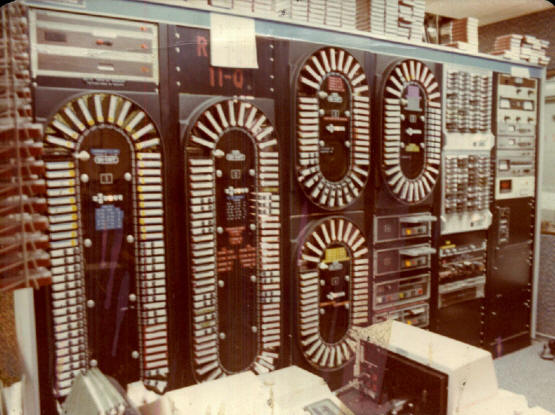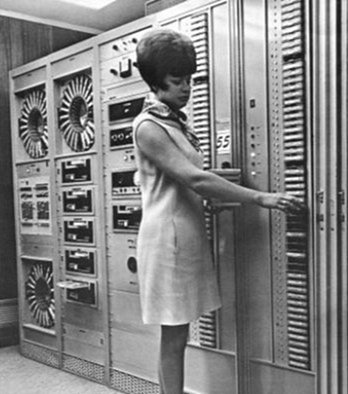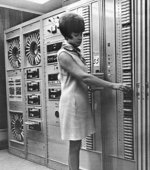-
Get involved.
We want your input!
Apply for Membership and join the conversations about everything related to broadcasting.
After we receive your registration, a moderator will review it. After your registration is approved, you will be permitted to post.
If you use a disposable or false email address, your registration will be rejected.
After your membership is approved, please take a minute to tell us a little bit about yourself.
https://www.radiodiscussions.com/forums/introduce-yourself.1088/
Thanks in advance and have fun!
RadioDiscussions Administrators
You are using an out of date browser. It may not display this or other websites correctly.
You should upgrade or use an alternative browser.
You should upgrade or use an alternative browser.
The best automation system you've used???
- Thread starter RyanT
- Start date
ContinuousWave
Star Participant
SS32 Windows is good, so is NexGen or a Prophet PSi Wizard system!...Have dealt with Maestro (also a good one...bought out by Scott Studios) and AudioVault (nice but not cheap)...
The problem is usually support costs after you buy with the ones above (except AV...Nexgen 101 is a cheaper package and works great from what I have read)..
The problem is usually support costs after you buy with the ones above (except AV...Nexgen 101 is a cheaper package and works great from what I have read)..
K
K.M. Richards
Guest
This thread makes me nostalgic for the old Schafer 903s I used in the 1970s and early 1980s. (*sigh*)
secondchoice
Star Participant
Just as long as there are no carousels! I guess they were cheap. The instacart 48 was easier to program.
K
K.M. Richards
Guest
I've worked with automation systems that used carousels, both sequential operation and random access. The big problem with them is that most stations failed to do any routine maintenance on the mechanics; occasional cleaning of the tray assemblies with denatured alcohol followed a light coat of silicone spray on the surfaces that slid against each other did wonders to keep the trays moving smoothly, which avoided 99% of the jams.
I've also worked at stations with Instacarts. They were easy to program but had quirks of their own. If the ground connection wasn't perfect, if any static electricity discharged to them all 48 trays would fire simultaneously. I know of one station (not one I worked for) that had multiple Instacarts, all of which would repeatedly do that "trick" during lightning storms. And since all 48 trays shared a common audio bus, that would create quite a cacophony if the Instacart was on-air when it happened ... a lesser version would happen if the "stop" tone didn't get recognized and another tray in the same unit was playing. But the biggest headache was if you ever needed to set the azimuth on them, as every tray had to be set individually; ditto demagnetizing the heads ... 48 of those, too.
One station had the Schafer replacement for the carousel ... Audiofile. Three columns of 16 trays, each column with its own head assembly which moved up and down as needed. Advantage: You could play a cart each from all three columns in the same stopset, or sometimes repeat if there was enough time for a cart to recue and the assembly to move to another tray. Disadvantage: They really needed routine maintenance, which required removing the faceplate and all 48 trays, then cleaning the post that the assembly moved up and down and a light coat of spray silicone.
There is an Audiofile underneath the carousel in this rack:

And there were other variants, notably the IGM Go-Cart, which was sort of like a carousel but moved the tray assembly around using rubber wheels along a track. Those could have up to 78 trays in them (and I saw one with that maximum number of trays in an automation system once). The other was the predecessor to the carousel, the Gates 55, which was a column of 55 trays, taking up an entire rack, accessed sequentially from top to bottom, then back to the top. It was infamous for occasionally not completely returning a tray to the "out" position, then demolishing the cart edge as it attempted to move the playback assembly anyway.
This automation system had multiple Go-Carts (the two leftmost look like full 78-tray units to me):

Here's a pic of a Gates 55 (it's the unit not wearing the minidress ):
):

I've also worked at stations with Instacarts. They were easy to program but had quirks of their own. If the ground connection wasn't perfect, if any static electricity discharged to them all 48 trays would fire simultaneously. I know of one station (not one I worked for) that had multiple Instacarts, all of which would repeatedly do that "trick" during lightning storms. And since all 48 trays shared a common audio bus, that would create quite a cacophony if the Instacart was on-air when it happened ... a lesser version would happen if the "stop" tone didn't get recognized and another tray in the same unit was playing. But the biggest headache was if you ever needed to set the azimuth on them, as every tray had to be set individually; ditto demagnetizing the heads ... 48 of those, too.
One station had the Schafer replacement for the carousel ... Audiofile. Three columns of 16 trays, each column with its own head assembly which moved up and down as needed. Advantage: You could play a cart each from all three columns in the same stopset, or sometimes repeat if there was enough time for a cart to recue and the assembly to move to another tray. Disadvantage: They really needed routine maintenance, which required removing the faceplate and all 48 trays, then cleaning the post that the assembly moved up and down and a light coat of spray silicone.
There is an Audiofile underneath the carousel in this rack:

And there were other variants, notably the IGM Go-Cart, which was sort of like a carousel but moved the tray assembly around using rubber wheels along a track. Those could have up to 78 trays in them (and I saw one with that maximum number of trays in an automation system once). The other was the predecessor to the carousel, the Gates 55, which was a column of 55 trays, taking up an entire rack, accessed sequentially from top to bottom, then back to the top. It was infamous for occasionally not completely returning a tray to the "out" position, then demolishing the cart edge as it attempted to move the playback assembly anyway.
This automation system had multiple Go-Carts (the two leftmost look like full 78-tray units to me):

Here's a pic of a Gates 55 (it's the unit not wearing the minidress

Last edited:
ContinuousWave
Star Participant
Worked on an early automation system back in the 70s that used something similar to punch cards!! Was that a Schafer?? I cannot recall.....What a nightmare that was! (BTW the GATES 55 still did not show) An AM/FM combo I was DJing at in the late 70s had a carousel system (which they tried to use to play King Biscuit Flower Hour)...but most of the time, it was not running..there was a large red spotlight hooked to a silence sensor that would often be lit....go press reset and by the time you got back to the AM control room, that damn light was back on...
Jody-Thornton
Regular Participant
Automation is simply a tool to do the job. It can be used to replace jocks, but used properly, it takes the mundane crap out of the job and allows you to concentrate on content. There is no way I would want to go back to using carts, CD's, 45's, albums and reel to reel tape.
Why? That was also part of what made radio fun. I liked being the "one" who started all of those elements and mixing them together.
Why? That was also part of what made radio fun. I liked being the "one" who started all of those elements and mixing them together.
As someone who began their career as a board op even before the station had cart machines, I can't say I miss cue burn, miscues, skipping records, starting the turntable at the wrong speed, breaking the stylus, threading reel tapes, breaking a tape in fast forward, starting a tails out tape in the wrong direction, and all the other thrills of radio in that era.
Of course, today they don't need board ops.
To me, the fun was creating a "sound". The easier that is to do... and the fewer mechanical hindrances there are, the better I can do that.
It worked when I posted it but apparently the site I linked from is hosted at a server that disallows hotlinks.
Let's see if a direct download to my computer and upload to here works:
View attachment 346
You are missing a close-up shot of a cart that has been sliced in half by the play deck. It was usual to find cart parts in the bottom of the rack unit, neatly cut by the precision milled deck.
This automation system had multiple Go-Carts (the two leftmost look like full 78-tray units to me)
If you magnify it a bit, you can see my hand written note taped to the top of the middle rack.
K
K.M. Richards
Guest
You are missing a close-up shot of a cart that has been sliced in half by the play deck. It was usual to find cart parts in the bottom of the rack unit, neatly cut by the precision milled deck.
I may not have had a photo of that, but I did allude in my narrative about carts being destroyed when the Gates failed to completely move a cart back out of the play position:
The other was the predecessor to the carousel, the Gates 55, which was a column of 55 trays, taking up an entire rack, accessed sequentially from top to bottom, then back to the top. It was infamous for occasionally not completely returning a tray to the "out" position, then demolishing the cart edge as it attempted to move the playback assembly anyway.
Last edited:
K
K.M. Richards
Guest
If you magnify it a bit, you can see my hand written note taped to the top of the middle rack.
I saw the note, and knew it was yours, but it's unreadable. Any chance you remember what it says, decades later?
Jody-Thornton
Regular Participant
As someone who began their career as a board op even before the station had cart machines, I can't say I miss cue burn, miscues, skipping records, starting the turntable at the wrong speed, breaking the stylus, threading reel tapes, breaking a tape in fast forward, starting a tails out tape in the wrong direction, and all the other thrills of radio in that era.
Of course, today they don't need board ops.
To me, the fun was creating a "sound". The easier that is to do... and the fewer mechanical hindrances there are, the better I can do that.
I suppose I liked that there was a risk of something going wrong, but it turned out right. I liked that things had to be cared for to work properly; that things just weren't for granted.
(This is not directed at you...lol) but I don't understand any excuse for cue-burn. Why weren't those high-rotation cuts carted up immediately?
K
K.M. Richards
Guest
(This is not directed at you...lol) but I don't understand any excuse for cue-burn. Why weren't those high-rotation cuts carted up immediately?
Economics, for the most part. Small- and medium-market stations rarely could afford the investment to have enough cart machines in the control room, and enough blank carts, to use them for anything but commercials.
I have spent my entire life in or around the Los Angeles market. The L.A. stations were into carted music libraries by the early 1970s but the next market north -- Oxnard/Ventura -- didn't have a station with music on carts for another ten years. One station in that market stayed with vinyl until 1989 and then jumped to using CDs when they changed format that year.
I suppose I liked that there was a risk of something going wrong, but it turned out right. I liked that things had to be cared for to work properly; that things just weren't for granted.
One of the biggest advantages of automation is having your prime time jocks on over the weekends and even in overnights. When I put the System 9000 pictured in this thread on 11-Q in San Juan, we were #1 in adult women and #2 in the total market... but our biggest issues concerned the talent in the lesser shifts. So we automated, and had a "hall monitor" who could load the automation, including one of about 200 weather carts. But no weekend jocks. That was in about 1977.
... but I don't understand any excuse for cue-burn. Why weren't those high-rotation cuts carted up immediately?
KR is exactly right. The cost.
On the first station I built, HCRM1, we had cart machines... the only ones in the country. But carts were, after shipping and import taxes and export agent fees, over $10 for a 70" and something like $14 for the song-length ones. And our average spot rate was around $0.50, so we played vinyl.
By 1971, when I was at a major market US station, WUNO, we transitioned to all carts for the currents but still kept gold on vinyl. The next few years saw every place I worked move to carts for music... but that was nearly 15 years from when cart machines came on the market.
I saw the note, and knew it was yours, but it's unreadable. Any chance you remember what it says, decades later?
I think it was "AQLI" which I have put in studios for the last 5 decades.... ¿A quién le importa? or, "who cares?"
It's a reminder to the jocks to be relevant and not boring. If nobody cares, don't say it.
Jody-Thornton
Regular Participant
Well I went back checking and it appears that Prais fellow who sounded like a grumpy retired manager who had the bad sense to hire loafers he hated, hasn't been around in awhile. 2012 was his last post. But he really sounded like someone I'd have MAJOR trouble respecting.
The industry (if it were only in better shape) would have been much better off without the likes of Prais in it.

The industry (if it were only in better shape) would have been much better off without the likes of Prais in it.
G
Groove1670
Guest
Automation has been a part of radio since the 60's and 70's. We had a Harris 90 on a FM because we couldn't afford two staffs. Later with the infancy of digital technology we would hook hook up a Smartcaster (one hour of storage time in stereo) to our Jones Satellite feed (and play CD's during live shifts). We would later install music on Hard Drive.
Today we use StationPlaylist on our stations. Very simple, affordable, stable program with music scheduler and voicetracking. I do agree with Prais in a sense that I don't miss no shows on the weekend, or jocks that were drunk, fell asleep, walked out, egos, or decided to break the format, but we had a lot of great talent and employees too.
Today we use StationPlaylist on our stations. Very simple, affordable, stable program with music scheduler and voicetracking. I do agree with Prais in a sense that I don't miss no shows on the weekend, or jocks that were drunk, fell asleep, walked out, egos, or decided to break the format, but we had a lot of great talent and employees too.
Jody-Thornton
Regular Participant
Automation has been a part of radio since the 60's and 70's. We had a Harris 90 on a FM because we couldn't afford two staffs. Later with the infancy of digital technology we would hook hook up a Smartcaster (one hour of storage time in stereo) to our Jones Satellite feed (and play CD's during live shifts). We would later install music on Hard Drive.
Today we use StationPlaylist on our stations. Very simple, affordable, stable program with music scheduler and voicetracking. I do agree with Prais in a sense that I don't miss no shows on the weekend, or jocks that were drunk, fell asleep, walked out, egos, or decided to break the format, but we had a lot of great talent and employees too.
Hey, as a listener, I loved Stereo Rock from TM and it sounded GREAT! But yes great and lousy employees are a part of every industry. To me, Prais came off with an attitude of "I'm giving up"
- Status
- This thread has been closed due to inactivity. You can create a new thread to discuss this topic.


